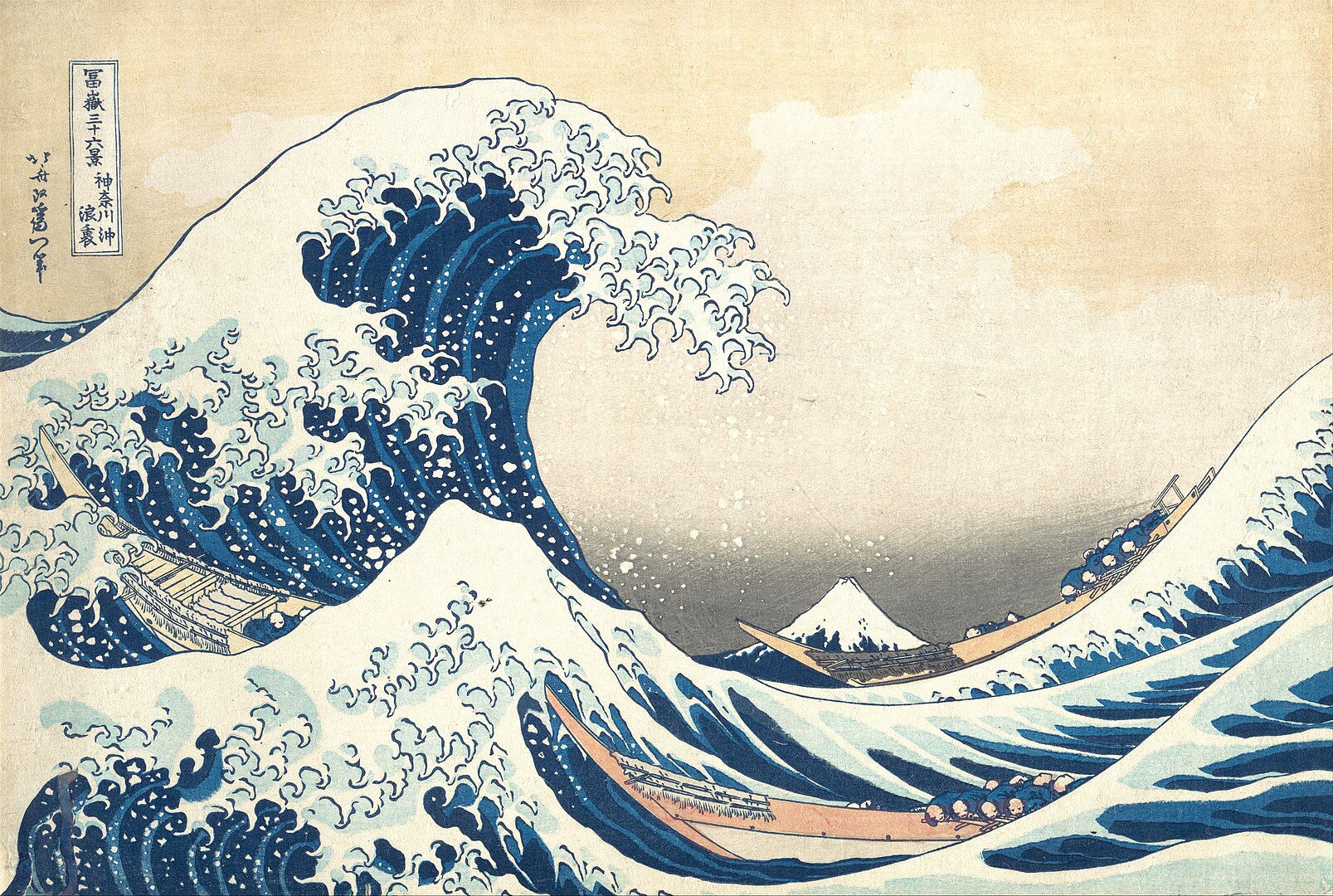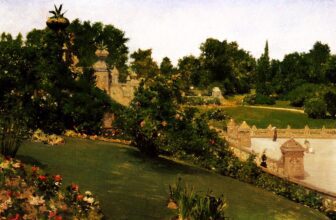
What is The Meaning of Great Wave off Kanagawa
A Deep Dive into Katsushika Hokusai’s Masterpiece
Among the world’s most iconic images, The Great Wave off Kanagawa by Katsushika Hokusai stands as a monumental testament to the fusion of artistic mastery, cultural significance, and emotional resonance. This powerful woodblock print, first published in the early 1830s, has transcended centuries, borders, and mediums to become one of the most recognizable and analyzed works of Japanese art. In this in-depth exploration, we will examine the story behind the painting, its creation and the artist who made it, the intricate symbolism and interpretations it invites, the scene it captures, its artistic classification, and the journey of where it resides today.
What Is The Great Wave off Kanagawa All About?
At first glance, The Great Wave off Kanagawa seems like a simple depiction of a monstrous wave towering over small boats. But upon closer inspection, it becomes clear that this work is layered with meaning. The central image is a massive, cresting wave, its frothy claws reaching like fingers toward the boats below, threatening to swallow them whole. Just beyond the chaos, in the background, rises the stoic silhouette of Mount Fuji, Japan’s sacred mountain, calm and unmoved by the turmoil of the sea.
The print is part of Hokusai’s celebrated series titled Thirty-Six Views of Mount Fuji, a collection of woodblock prints dedicated to portraying the mountain from different vantage points and in varying conditions. The Great Wave is the most famous and possibly the most poignant in the series, contrasting the immovable, enduring strength of Mount Fuji with the raw, dynamic power of nature represented by the ocean.
This juxtaposition speaks to core themes in Japanese aesthetics and philosophy, including the impermanence of life (mujo), the power of nature, and the human struggle against natural forces.
Who Painted The Great Wave off Kanagawa and How?
Katsushika Hokusai (1760–1849) was the genius behind this seminal work. A master of the ukiyo-e style of woodblock printing, Hokusai was an innovator, a restless spirit, and an artist who continuously reinvented his style across decades. He was over seventy years old when he created The Great Wave, proving that his artistic prowess not only endured but matured with age.
Hokusai began his career as an apprentice to a woodblock engraver before studying under the ukiyo-e master Katsukawa Shunshō. Over time, he evolved beyond the traditional subjects of kabuki actors and courtesans, focusing instead on landscapes, nature, and scenes of daily life. His admiration for Chinese and Western art techniques, especially their use of perspective and shading, infused his own work with a distinctive style.
The creation of The Great Wave was a collaborative process, typical of ukiyo-e. Hokusai would design the artwork on paper. Skilled carvers would then transfer the image onto multiple wooden blocks, each block carved for a different color. Finally, printers would apply water-based ink to the blocks and press them onto paper to produce the finished image. The print’s palette is dominated by Prussian blue, a synthetic pigment imported from Europe. This color was not only fashionable in Japan at the time but also exceptionally durable, lending the wave its distinctive and enduring vibrancy.
Symbolism and Interpretation of The Great Wave off Kanagawa
Symbolism is at the heart of The Great Wave off Kanagawa, and multiple interpretations have emerged over the centuries.
1. The Wave as Nature’s Power
The colossal wave represents the overwhelming and uncontrollable force of nature. It dwarfs the human presence in the boats, highlighting the vulnerability of man in the face of natural elements. This perspective aligns with Japanese views on the natural world, not as something to dominate, but as a force to respect, revere, and coexist with.
2. Mount Fuji as a Symbol of Stability
Mount Fuji, barely noticeable at first glance, offers a symbolic counterpoint to the chaos of the wave. As an iconic and spiritual symbol in Japanese culture, Fuji represents endurance, immortality, and the eternal. It anchors the scene, suggesting that amidst the transient violence of the world, some elements remain unchanging.
3. Human Resilience and Fragility
The tiny fishermen in their boats evoke a powerful emotional response. Their presence is precarious, yet they do not appear to be in panic. This could be interpreted as a metaphor for the resilience of the Japanese people, stoic and enduring in the face of disaster, a theme especially poignant given Japan’s long history of natural calamities such as earthquakes and tsunamis.
4. Western Influence and Artistic Innovation
Hokusai was deeply interested in Western artistic techniques, especially linear perspective, which was rare in traditional Japanese art. The way he renders depth in The Great Wave, with the foreground wave looming large and Mount Fuji receding into the background, reveals an adoption of Western composition methods. This blend of East and West adds another layer of meaning, the meeting of cultures, the fluidity of artistic influence, and the universality of visual storytelling.
What Is Happening in the Painting?
The drama unfolding in The Great Wave off Kanagawa is both physical and metaphorical. The viewer witnesses a towering wave at the moment it is about to crash down on three oshiokuri-bune, fast, narrow boats used to transport live fish to market. The boats, likely manned by experienced fishermen, are depicted in a diagonal sweep that matches the curve of the wave. This visual rhythm enhances the sense of imminent danger and motion.
Yet the human figures are not the central focus. They are almost engulfed by the sea, reinforcing the theme of human insignificance in the face of nature. The wave, though stylized, conveys a terrifying realism, the foam looks like clawed hands, the crest frozen at its most menacing moment, and the trough below dark and deep.
Despite this, the calm profile of Mount Fuji in the distance imparts a sense of balance and hope. The mountain remains untouched by the chaos in the foreground, reminding the viewer of the enduring presence of nature’s quieter, more stable forces.
What Type of Art Is The Great Wave off Kanagawa?
The Great Wave off Kanagawa is a prime example of ukiyo-e, a genre of Japanese art that flourished during the Edo period (1603–1868). Ukiyo-e, which means “pictures of the floating world,” initially focused on the pleasures of urban life, entertainers, courtesans, and scenes from the kabuki theater.
By the time Hokusai created The Great Wave, the ukiyo-e tradition had evolved to include landscapes and scenes from daily life. Hokusai was instrumental in this shift. His work in landscape elevated the genre, combining aesthetic beauty with philosophical depth.
Technically, the piece is a nishiki-e, or “brocade print,” a type of polychrome woodblock print that used multiple carved blocks to apply different colors. Hokusai’s innovative use of perspective, color, and composition make The Great Wave not only a masterpiece of ukiyo-e but also a bridge to modern printmaking and graphic art.
Where Is The Great Wave off Kanagawa Painting Located Today?
Unlike oil paintings, which are usually unique pieces, woodblock prints like The Great Wave were produced in editions, meaning multiple original copies exist. As a result, various institutions and collectors around the world own and exhibit authentic prints.
Some of the most notable holdings include:
The Metropolitan Museum of Art (New York, USA) – They house a pristine copy in their Asian Art collection.
The British Museum (London, UK) – Their extensive Japanese collection includes a well-preserved copy of The Great Wave.
Museum of Fine Arts (Boston, USA) – Their collection features several works by Hokusai, including The Great Wave.
The Tokyo National Museum (Tokyo, Japan) – As the cultural heart of Hokusai’s homeland, it holds important Japanese works, including this piece.
The Art Institute of Chicago (Chicago, USA) – Their copy often features in exhibitions of Asian art and ukiyo-e.
While no single museum holds exclusive rights to the image, the widespread distribution of The Great Wave has helped cement its place in the global cultural consciousness.
The influence of The Great Wave cannot be overstated. It has inspired countless artists across disciplines, from Claude Monet and Vincent van Gogh to contemporary designers and animators. It has been referenced in music videos, fashion, graphic design, and even emojis. Its themes of impermanence and human vulnerability resonate universally.
Moreover, The Great Wave stands as a symbol of cross-cultural artistic exchange. Its use of imported pigments, European techniques, and Japanese traditions exemplifies how art transcends borders. It is at once Japanese and global, ancient and modern, simple and profound.
Katsushika Hokusai’s The Great Wave off Kanagawa is far more than a depiction of a natural phenomenon. It is a visual poem that captures the essence of human existence, the dance between chaos and serenity, fear and awe, fragility and strength. Its enduring popularity lies not only in its aesthetic beauty but in its ability to communicate complex ideas through visual simplicity.
Created by an aging artist who had spent a lifetime mastering his craft, the print is a testament to the enduring power of creativity. It invites us to reflect on our place in the world, the majesty of nature, and the eternal quest for meaning amidst uncertainty. Like the wave itself, the artwork rises above time, continuing to inspire and move audiences nearly two centuries after its creation.




